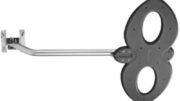A couple weeks ago, a reader at the Solid Signal Blog asked me this question. While it’s taken me a little bit of time to answer it, the answer’s worth reading.
Omni antennas

Omnidirectional antennas like Antop’s UFO are designed to pick up signals from all directions at once. It’s a neat trick accomplished with a special antenna design. This design isn’t as effective as the “regular” antenna design but antennas like the UFO compensate by building in massively powerful amplifiers.
Directional antennas

Directional antennas like our Xtreme Signal HDB91X are designed to pick up signals from a smaller slice of the sky. Typically, antennas like this have a beam width of 30 to 60 degrees, meaning they’re really only effective in 1/6th to 1/12th of the sky. But, because they only focus in on that bit of the sky, they are a lot better at doing the basic job of an antenna.
Combining antennas
Combining antennas is a tried-and-true way to get signals from two different directions. You can learn a little more about it here. It’s not hard… just point the antennas in two different directions and attach them to a combiner. Although it’s less important if the antennas are pointing away from each other, I always recommend that the cables be exactly the same length to avoid any potential phase problems.
So which is better?
As with all antennas, it really varies by your situation. But I would say as a general rule, if you are closer than 25 miles from every signal tower you’re trying to reach, an omni antenna is the clear winner. 25-45 miles it can really depend on factors like hills and trees, and over 45 miles you are almost always better off with two directional antennas.
What if you have antennas from three directions? In that case you are generally better off with an omni antenna as long as all three directions are relatively the same distance. The combiner you need for more than two antennas has quite a bit more loss. It also tends to take away from the benefit of multiple antennas, as I proved in this article.
If you’re looking for the best selection of antennas, get what you need by shopping at Solid Signal! If you need more advice, get a free antenna recommendation from a real expert by clicking here. A certified technician will review your case in detail. Then, they will contact you back with a shopping list of everything you’ll need to get great free TV!





